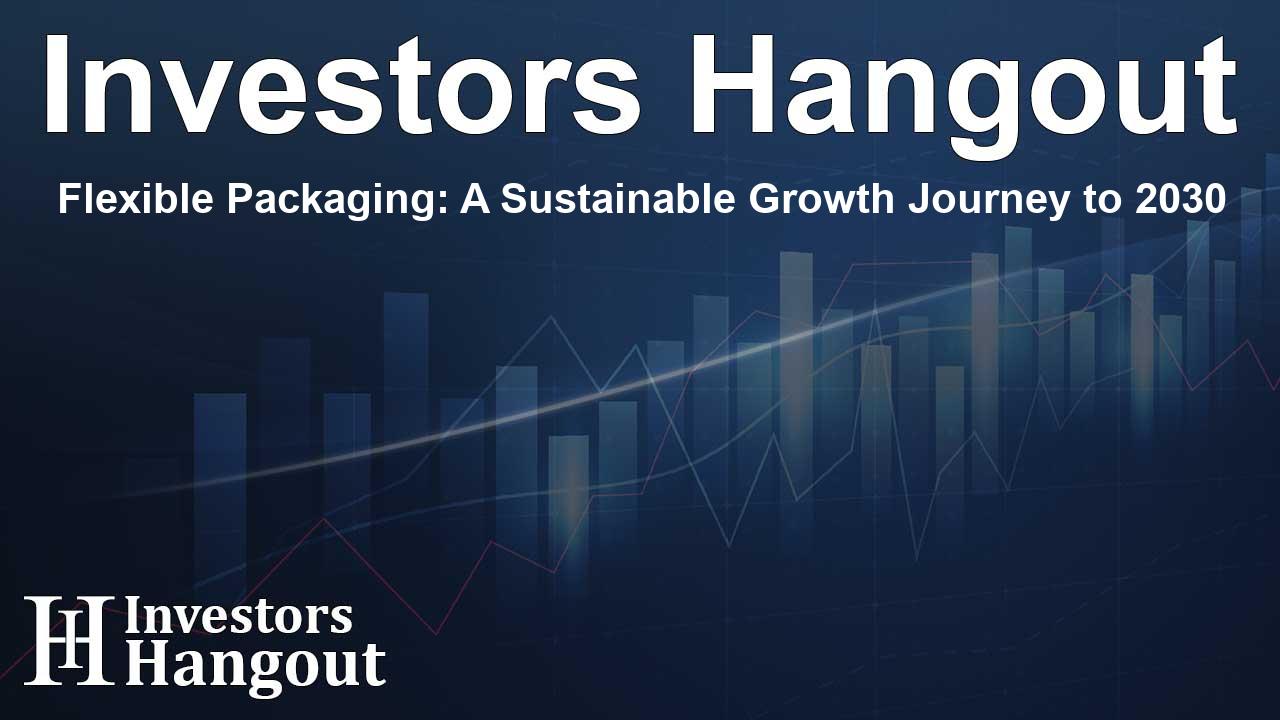Flexible Packaging: A Sustainable Growth Journey to 2030

Flexible Packaging Market Overview
The global flexible packaging industry is on a remarkable trajectory, poised to grow from USD 336.87 billion in 2025 to an astonishing USD 415.95 billion by 2030. This growth, translating to a compound annual growth rate (CAGR) of 4.31%, reflects the pivotal trends in sustainability and consumer convenience. Innovations in mono-material films and the latest advancements in digital printing technology are revolutionizing cost efficiency and design possibilities. These technologies not only minimize production waste but also adapt production processes to safeguard profits against fluctuations in raw material prices.
Driving Forces Behind Industry Growth
The surge in flexible packaging adoption across various sectors such as food, beverages, pharmaceuticals, and personal care products is significantly impacting the market's expansion. The increased preference for multi-use pouches has made the adoption of features like antifog PE/PP blends and resealable zippers commonplace. Additionally, the incorporation of vacuum skin films and high-barrier shrink films in protein packaging has been crucial, extending shelf life by up to 25 days and facilitating more predictable product replacement schedules.
Sustainability-Driven Innovations
As market dynamics shift, brands are increasingly prioritizing sustainability. Investments in recyclable laminates, mono-material solutions, and compostable films are at the forefront of this movement, shaping consumer choices across diverse industries. This focus on sustainable packaging is not just a trend but a necessity in today's eco-conscious environment.
Emerging Trends in Food and Beverage Packaging
The demand for convenience in food and beverages is steering the market toward formats like pouches, sachets, and resealable bags. These user-friendly packaging options are particularly resonant in emerging markets where convenience is king. The flexible packaging sector is adapting to these changing needs, ensuring easy access and usability.
Key Segments within the Flexible Packaging Landscape
Examining the flexible packaging market reveals critical segments that impact its dynamics:
Material Types
The industry encompasses a diverse range of materials, including:
- Plastic
- Paper
- Aluminum Foil
- Biodegradable and Compostable Materials
Product Offerings
Flexible packaging products vary significantly, with key offerings such as:
- Pouches
- Bags and Sacks
- Films and Wraps
Regional Insights and Trends
The flexible packaging market is characterized by notable regional dynamics, with significant growth forecasted in the Asia-Pacific region. This growth is primarily driven by increased packaged food consumption and expansions within the retail sector in countries like China, India, and Southeast Asia. Meanwhile, North America is focusing on sustainable packaging solutions propelled by regulatory pressures and consumer demand for eco-friendly products. Europe, on the other hand, is advancing circular economy initiatives that are reshaping packaging design and compliance measures significantly.
Competitive Landscape of Flexible Packaging
Competition within the flexible packaging industry is fierce with numerous global and regional players innovating to offer eco-friendly solutions. Leading entities in this space include:
- Amcor plc
- Sealed Air Corporation
- Mondi plc
- Huhtamaki Oyj
- Constantia Flexibles Group GmbH
These companies are committed to enhancing their market positions through product innovation, forging strategic partnerships, and expanding manufacturing capacities to tap into emerging markets.
Conclusion
As we look ahead, the flexible packaging industry stands at a pivotal juncture marked by innovation, sustainability, and growing consumer expectations. With projected market growth underpinned by powerful trends, stakeholders must navigate these developments to capitalize on the opportunities they present.
Frequently Asked Questions
What is driving the growth in the flexible packaging market?
The growth is largely driven by innovations in sustainability, increasing consumer preference for convenience packaging, and rising demand in sectors like food and beverages.
How is sustainability affecting packaging materials?
Brands are prioritizing recyclable, mono-material solutions and compostable films to meet consumer expectations and regulatory pressures for eco-friendly packaging.
What are the key product types in flexible packaging?
Key product types include pouches, bags and sacks, films and wraps, all of which cater to various consumer needs and preferences.
Which regions are leading in flexible packaging demand?
Asia-Pacific is leading, especially in China and India, due to rising packaged food consumption, followed by North America and Europe focusing on sustainability.
Who are the major players in the flexible packaging industry?
Major players include Amcor plc, Sealed Air Corporation, Mondi plc, and Huhtamaki Oyj, among others, who are innovating to maintain competitive advantages.
About The Author
Contact Henry Turner privately here. Or send an email with ATTN: Henry Turner as the subject to contact@investorshangout.com.
About Investors Hangout
Investors Hangout is a leading online stock forum for financial discussion and learning, offering a wide range of free tools and resources. It draws in traders of all levels, who exchange market knowledge, investigate trading tactics, and keep an eye on industry developments in real time. Featuring financial articles, stock message boards, quotes, charts, company profiles, and live news updates. Through cooperative learning and a wealth of informational resources, it helps users from novices creating their first portfolios to experts honing their techniques. Join Investors Hangout today: https://investorshangout.com/
The content of this article is based on factual, publicly available information and does not represent legal, financial, or investment advice. Investors Hangout does not offer financial advice, and the author is not a licensed financial advisor. Consult a qualified advisor before making any financial or investment decisions based on this article. This article should not be considered advice to purchase, sell, or hold any securities or other investments. If any of the material provided here is inaccurate, please contact us for corrections.
